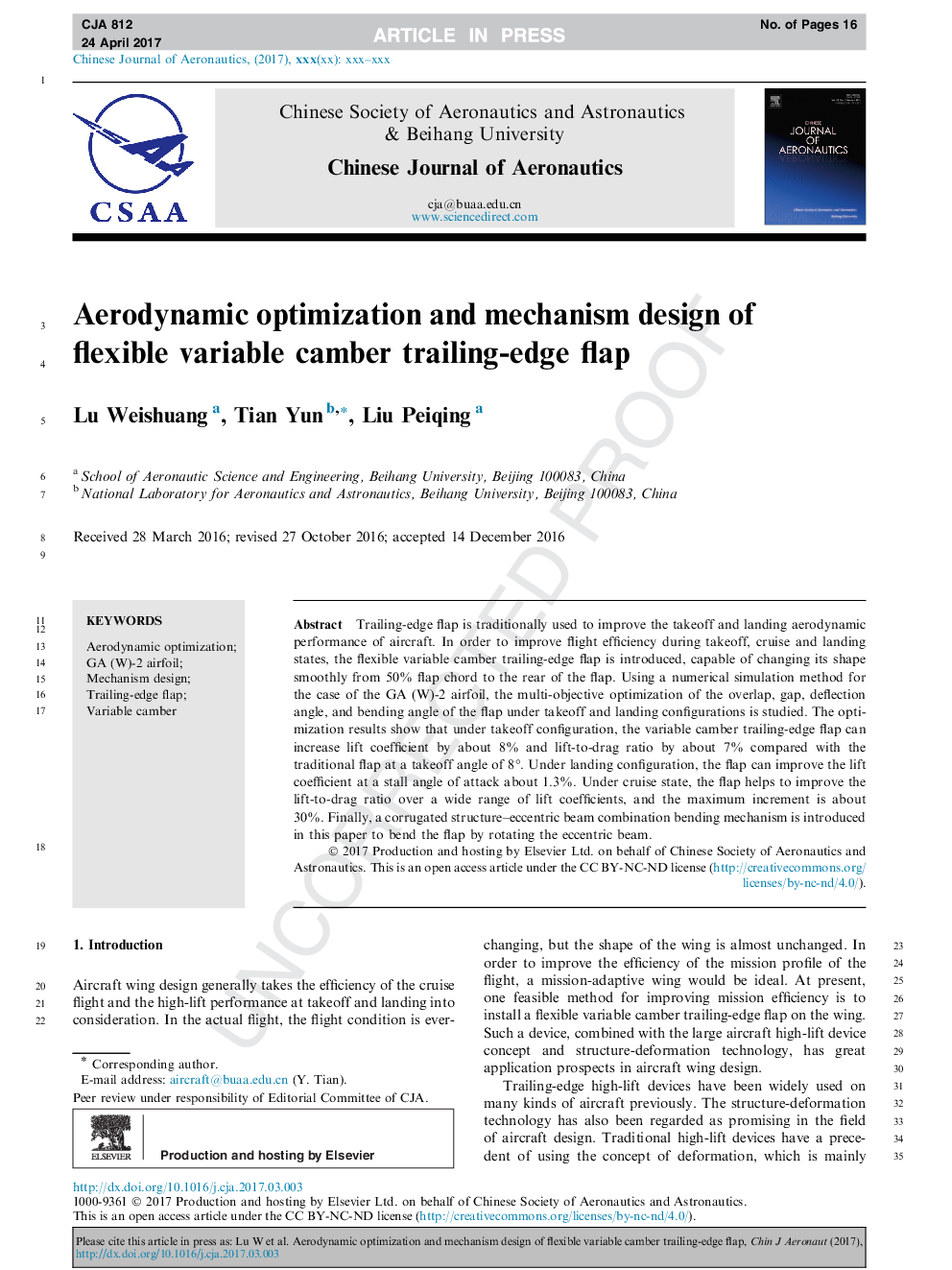| Article ID | Journal | Published Year | Pages | File Type |
|---|---|---|---|---|
| 7153987 | Chinese Journal of Aeronautics | 2017 | 16 Pages |
Abstract
Trailing-edge flap is traditionally used to improve the takeoff and landing aerodynamic performance of aircraft. In order to improve flight efficiency during takeoff, cruise and landing states, the flexible variable camber trailing-edge flap is introduced, capable of changing its shape smoothly from 50% flap chord to the rear of the flap. Using a numerical simulation method for the case of the GA (W)-2 airfoil, the multi-objective optimization of the overlap, gap, deflection angle, and bending angle of the flap under takeoff and landing configurations is studied. The optimization results show that under takeoff configuration, the variable camber trailing-edge flap can increase lift coefficient by about 8% and lift-to-drag ratio by about 7% compared with the traditional flap at a takeoff angle of 8°. Under landing configuration, the flap can improve the lift coefficient at a stall angle of attack about 1.3%. Under cruise state, the flap helps to improve the lift-to-drag ratio over a wide range of lift coefficients, and the maximum increment is about 30%. Finally, a corrugated structure-eccentric beam combination bending mechanism is introduced in this paper to bend the flap by rotating the eccentric beam.
Related Topics
Physical Sciences and Engineering
Engineering
Aerospace Engineering
Authors
Weishuang LU, Yun TIAN, Peiqing LIU,
